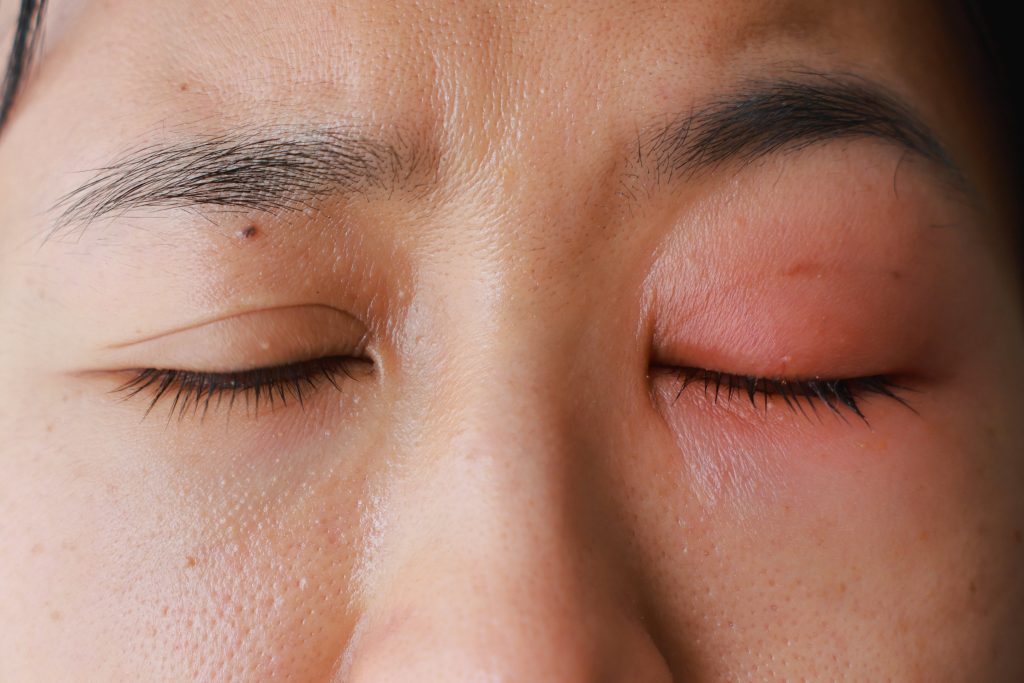Experienced Eyelid Surgeon in Singapore
Comprehensive Care for Eyelid Conditions
Eyelid Conditions and Treatments
Discover common eyelid conditions and effective treatments, including both surgical and non-surgical options, to restore comfort, vision, and appearance.
Eyelid Movement and Muscle Disorders
Difficulty Opening Eyelids (Apraxia of Eyelid Opening)
Description: Trouble lifting the eyelids due to muscle control problems, leading to multiple attempts to open them.
Treatment: Muscle relaxing injection or surgery to help muscles work better.
Benefit: Easier eyelid movement, improving comfort and vision.
Uncontrollable Eyelid Twitching (Blepharospasm)
Description: Eyelids twitch or blink involuntarily, making everyday tasks difficult.
Treatment: Muscle relaxing injections to relax the muscles and reduce twitching.
Benefit: Quick relief from twitching with minimal discomfort.
Face Muscle Spasms (Hemifacial Spasm)
Description: Uncontrolled muscle movements on one side of the face, often involving the eyelid.
Treatment: Muscle relaxing injections or surgery to reduce nerve irritation.
Benefit: Fewer spasms and better facial function.


Eyelid Position Abnormalities
Drooping Eyebrows (Brow Ptosis)
Description: Sagging eyebrows that can block vision and create a tired appearance.
Treatment: Brow lift surgery to raise the eyebrows and give a youthful look.
Benefit: Better vision and an improved appearance.
Outward-Turning Eyelid (Ectropion)
Description: The lower eyelid turns outwards, exposing the inner surface and causing eye irritation.
Treatment: Surgery to reposition and tighten the eyelid.
Benefit: Reduced irritation, more comfort, and better eye protection.
Inward-Turning Eyelid (Entropion)
Description: The eyelid turns inward, causing lashes to rub against the eye, leading to discomfort.
Treatment: Surgery to correct the eyelid’s position.
Benefit: Less irritation and prevention of eye damage.
Eyelid Lumps, Swellings, and Tumours
Eyelid Bump (Chalazion)
Description: A painless lump on the eyelid from a blocked oil gland, which can cause discomfort.
Treatment: Warm compresses or minor surgery to drain the lump.
Benefit: Quick relief and lower risk of the lump returning.
Painful Eyelid Lump (Stye)
Description: A red, painful bump on the edge of the eyelid caused by an infection.
Treatment: Antibiotic ointments, warm compresses, or surgical drainage.
Benefit: Fast pain relief and reduced swelling.


Infections and Inflammations
Eyelid Inflammation (Blepharitis)
Description: Red, swollen eyelid edges with flaky skin, often causing irritation.
Treatment: Regular eyelid cleaning, warm compresses, and antibiotic drops.
Benefit: Lasting relief from irritation and inflammation.
Eyelid Skin Rash (Eyelid Dermatitis)
Description: Red, itchy, flaky skin on the eyelids, often from allergies or irritants.
Treatment: Topical creams and avoiding triggers.
Benefit: Reduced itching and healthier skin.
Skin Laxity and Wrinkles
Crow’s Feet & Forehead Lines
Description: Fine lines around the eyes and forehead caused by aging and repeated facial expressions.
Treatment: Muscle relaxing injections to smooth out the wrinkles.
Benefit: A more refreshed and youthful look with minimal recovery time.
Sagging Eyelid Skin (Dermatochalasis)
Description: Loose skin on the upper or lower eyelids that can affect vision and appearance.
Treatment: Surgery to remove excess skin and fat (Blepharoplasty).
Benefit: Better vision and a younger-looking appearance.


Lash and Eyelid Margin Issues
Extra Eyelashes (Distichiasis)
Description: Extra rows of eyelashes that grow inward, irritating the eyes and possibly causing damage.
Treatment: Removing the extra lashes or surgery to redirect their growth.
Benefit: Relief from irritation and prevention of eye injury.
Inward-Growing Eyelashes (Trichiasis)
Description: Eyelashes grow towards the eye, causing redness and discomfort.
Treatment: Lash removal or electrolysis to stop lashes from growing inward.
Benefit: More comfort and lower risk of eye injury.
Other Eyelid Conditions
Eyelid Cancer
Description: Unusual growths on the eyelid that need early detection and treatment to prevent spreading.
Treatment: Surgical removal of the cancer, often followed by reconstruction.
Benefit: Effective removal of cancer with minimal scarring and preserved eyelid function.
Extra Eyelid Skin Pressing on Eye (Epiblepharon)
Description: A condition where extra skin on the eyelid causes lashes to touch the eye, common in children.
Treatment: Monitoring or corrective surgery if the issue persists.
Benefit: Less discomfort and better eye health as the child grows.

Treatments & Procedures We Offer
From correcting eyelid abnormalities to enhancing facial aesthetics, each procedure is tailored to ensure optimal results, comfort, and care.
Eyelid Surgery (Blepharoplasty)
Purpose: To remove excess skin and fat, improving vision or cosmetic appearance.
Commonly Used For:
- Dermatochalasis (sagging eyelid skin)
- Crow’s feet and forehead wrinkles (often combined with muscle relaxing injections)
- Improving field of vision obstructed by drooping skin
Ptosis Repair Surgery
Purpose: To lift and strengthen drooping eyelids by adjusting the eyelid muscles.
Commonly Used For:
- Apraxia of eyelid opening
- Brow ptosis (drooping eyebrows affecting the eyelid)
Ectropion and Entropion Repair
Tumour Removal and Reconstructive Surgery
Purpose: To safely remove eyelid tumours while preserving function and appearance.
Commonly Used For:
- Eyelid cancer
- Benign and malignant growths on or around the eyelid
Chalazion Surgery (Incision and Drainage)
Purpose: To remove or drain a chalazion (painless eyelid lump) if it does not resolve with home treatments.
Commonly Used For:
- Persistent chalazion (eyelid bump)
- Large styes that do not respond to conservative treatment
Corrective Surgery for Lash Disorders (Trichiasis and Distichiasis)
Purpose: To correct the direction of eyelashes or remove problematic lashes, preventing them from rubbing against the eye.
Commonly Used For:
- Trichiasis (inward-growing lashes)
- Distichiasis (extra rows of lashes)
Epiblepharon Surgery
Purpose: To correct excess skin causing lashes to press against the eye, typically in children.
Commonly Used For:
- Epiblepharon, a congenital eyelid condition
Don’t let eyelid issues affect your vision or confidence. Contact us today to find the right solution for you.
